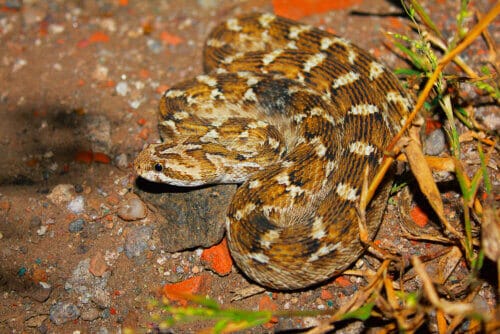The World Health Organization strategic plan that aims to reduce by 50% the damage from snakebites by 2030. Researchers from Tel Aviv University are also members of the international group studying the field

Every year, around 1.8 venomous snake bites occur around the world, around 94,000 of which are fatal. Snake bites are considered a significant cause of death in the tropics, especially in Southeast Asia and sub-Saharan Africa, and the main victims are farmers bitten in their fields. As a response, the World Health Organization launched a strategic plan that aims to reduce by 50% the harm from snake bites by 2030. An international research group with the participation of researchers from Tel Aviv University recently created an innovative simulation model to predict snake bites, based on a better understanding than before of interactions between farmers and snakes in time and in space.
In February watch out for the Indian viper
The purpose of the model is to determine the probability of snake bites in certain places (for example, in rice fields versus tea fields), and at different times (hours of the day and months of the year). The study was based on data and many studies from Sri Lanka, where about 30,000 poisonous stings occur every year, causing about 400 deaths. He focused on 6 species of snakes, some of the most venomous in the world (cobra, adder, Indian viper, common krait, Ceylon krait and honey-nosed viper), in front of farmers who grow 3 types of crops common in the region: rice, tea and rubber. For example, the model predicts that the peak in Indian viper bites is expected in February and August in rice fields, while the honey-nosed viper prefers rubber plantations in April-May. In addition to this, the model is able to identify that in the southeast of the area where the study was conducted, the snake that causes the highest number of bites is the Indian viper (one of the most dangerous snakes in the world), compared to the rest of the region, where the model predicts that the honey-nosed viper bites, which are less dangerous, are the most common.
The research was led by Dr. Takuya Iwomura (currently at the University of Oregon) and Eyal Goldstein from the School of Zoology at the George S. Wise Faculty of Life Sciences, and Dr. Chris Murray from Imperial College University and the School of Hygiene and Tropical Medicine in London. Researchers from the Liverpool School of Tropical Medicine, Lancaster University and the University of Kelaniya in Sri Lanka also participated in the study. The article was published in the journal PLOS Neglected Tropical diseases .
Map the meeting points between snakes and people
"Our research has built a first-of-its-kind multidisciplinary model, which includes the behavior patterns of both sides - snakes and humans, and makes it possible to identify risk factors at different times and places and warn of them. For example, the model is able to distinguish between areas with a high risk versus a low risk of being bitten, a difference that can be reflected in a double number of biters per 100,000 people", explains Eyal Goldstein.
"Snakes and humans are active at different times of the day, in different months and in different habitats, and the model makes it possible to identify the meeting points between them, especially in places where farmers work," Dr. Mori elaborates. "Also, we integrated into the model a factor of aggressiveness for each species of snake - as a measure of the probability of such an encounter turning into a bite."
Dr. Iwomura emphasizes that "our approach is to analyze interactions between snakes and humans in a mathematical way, with an emphasis on the ecological dimension. This is a completely new approach to understanding the mechanism that causes snake bites. Unlike most of the studies conducted to date, which focused mainly on social and economic risk factors, we chose to focus on ecological aspects, such as the movement of snakes in space, habitats, the influence of climate conditions and precipitation, and the behavior of farmers and snakes, as a key to predicting a potential encounter between the two parties."
The hops and the climate crisis?
Testing the model against existing data in Sri Lanka revealed that it accurately predicts bite patterns in different regions and seasons, as well as the relative contribution of different snake species to the overall picture, according to observations from hospitals. Now the researchers want to apply the model in places where there is still no accurate data on snake bites, and even use it for predictions for the coming years, when the behaviors of both parties, the human and the snake, will change due to climate change, such as an increase in precipitation that is expected to increase the activity of snakes, alongside changes in the use In soils and habitats available to snakes.
"Our model can focus efforts within the framework of the policy to reduce hops, and be a warning tool to increase awareness and save human lives," says Dr. Iwomura and concludes, "Also, we see this study as only the first step in our work. In the future, we intend to develop more complex models of encounters between humans and animals, in order to support policy and decision-making in the real world, both regarding public health and the preservation of nature."
More of the topic in Hayadan:
